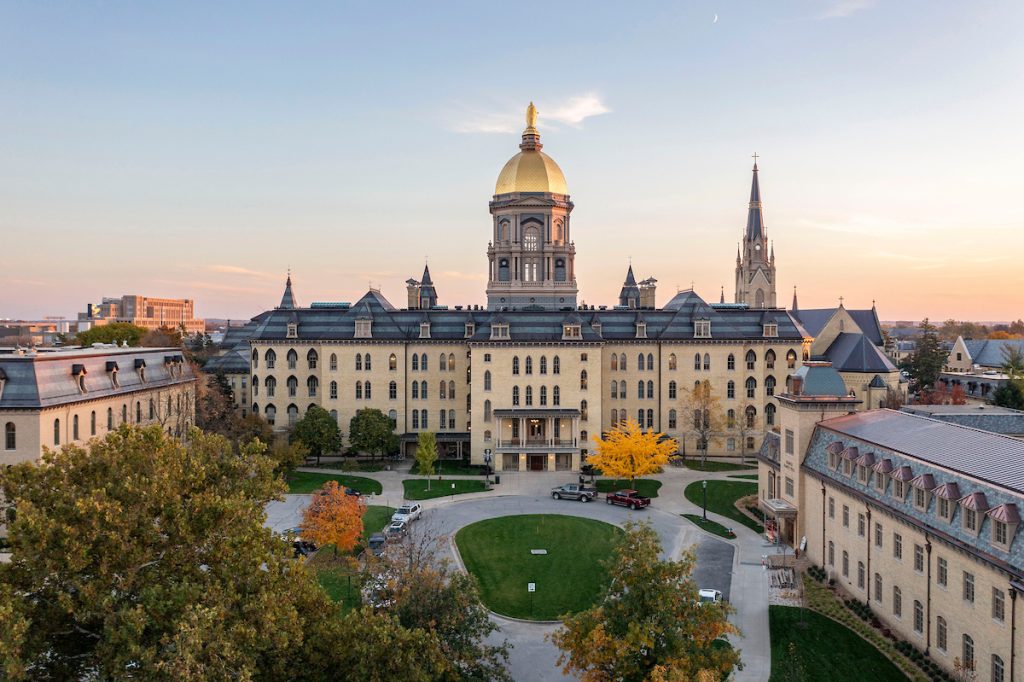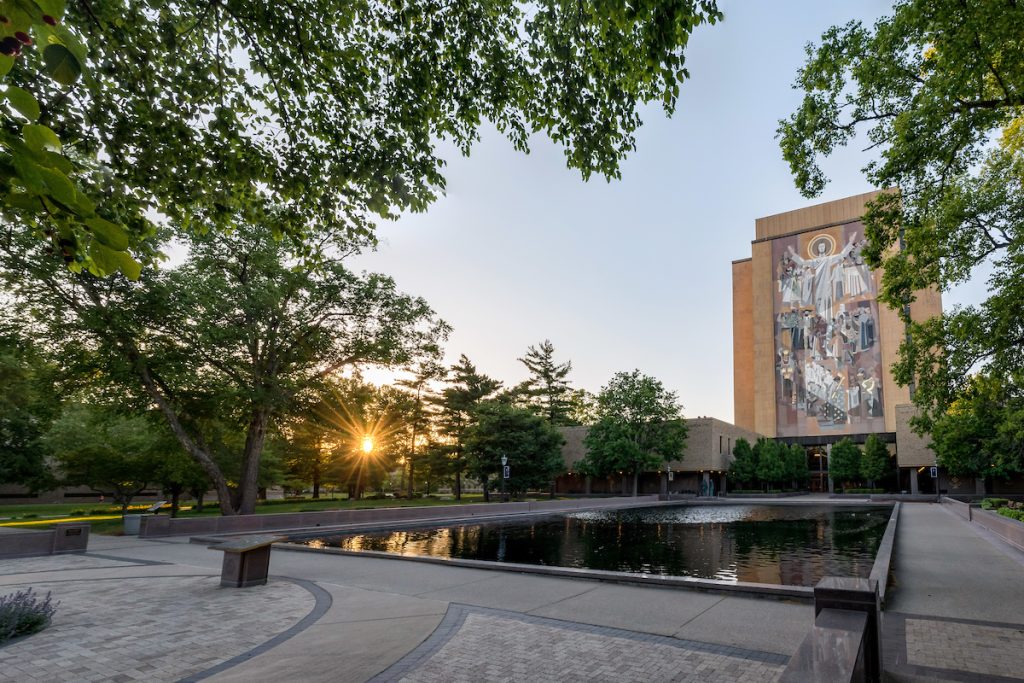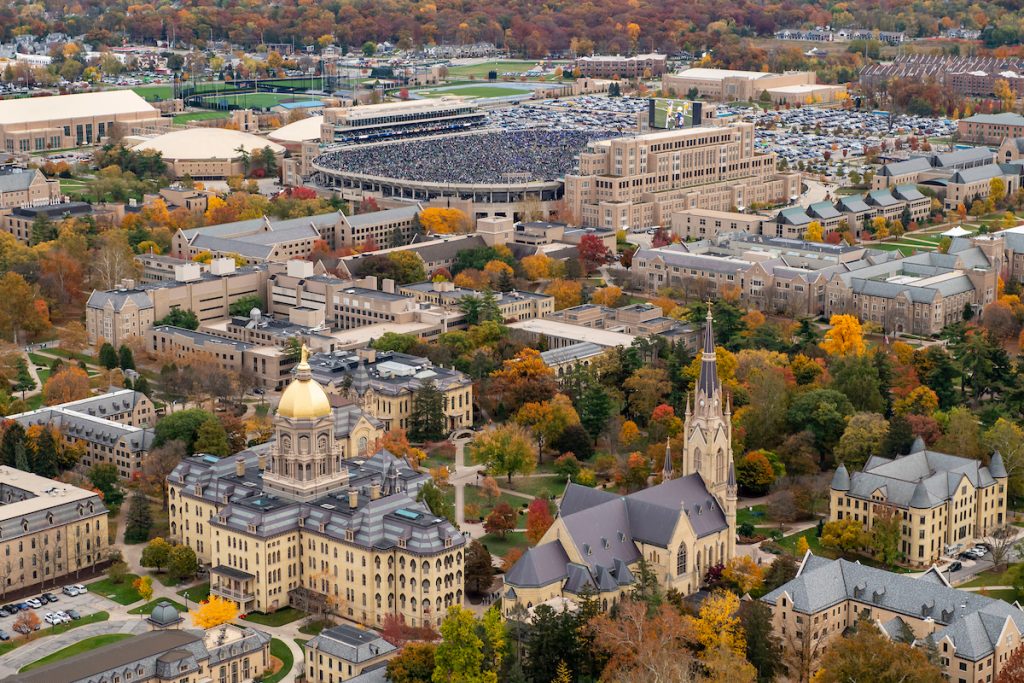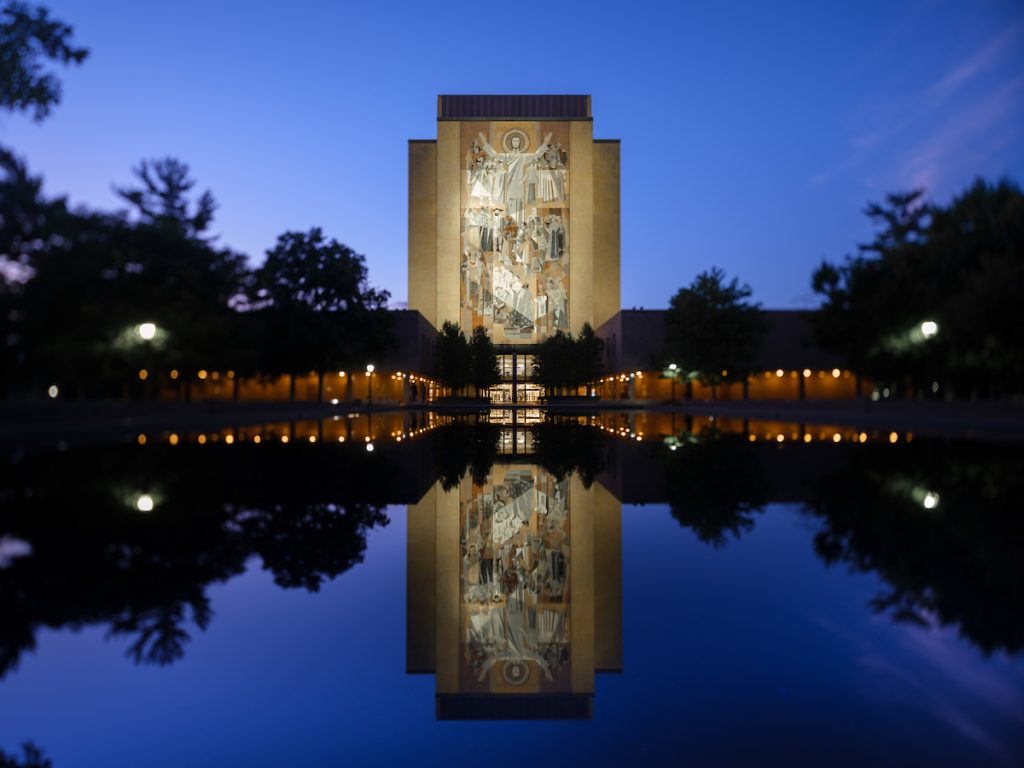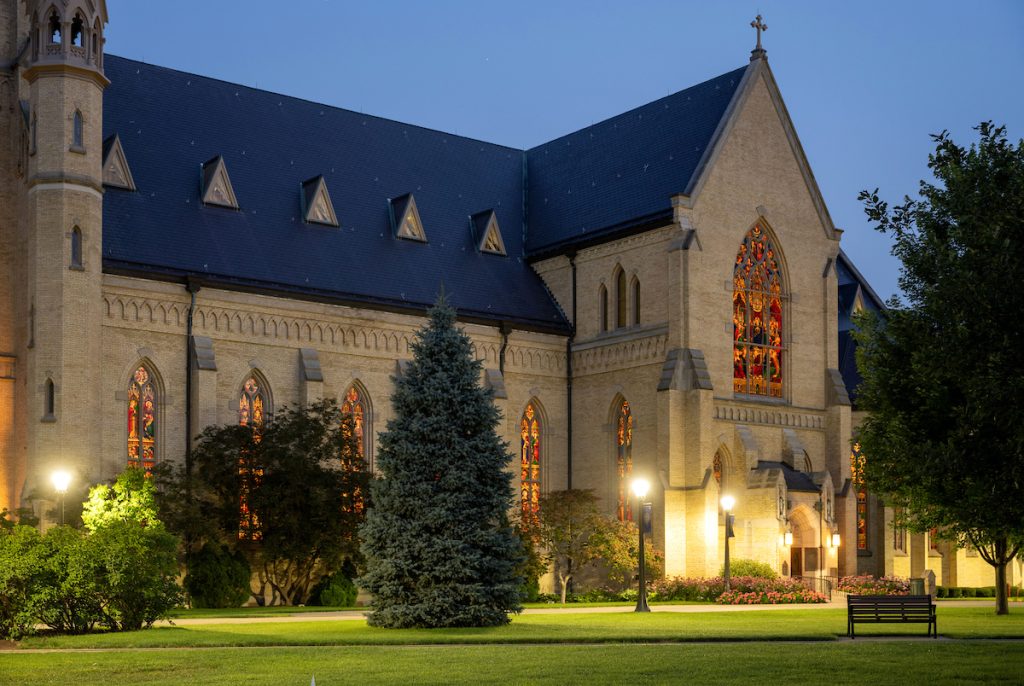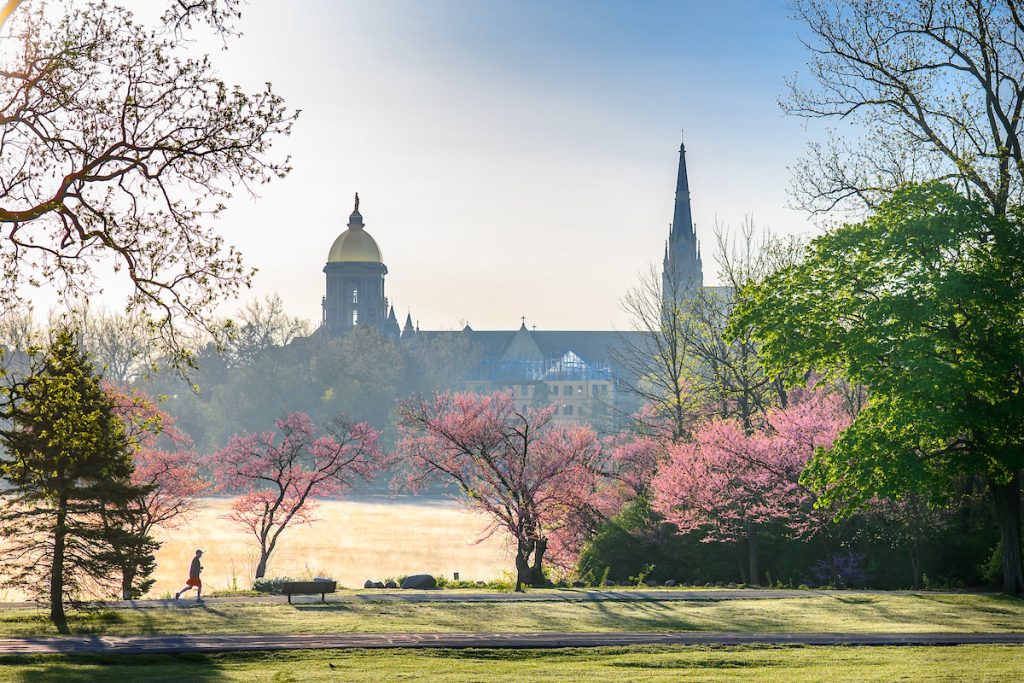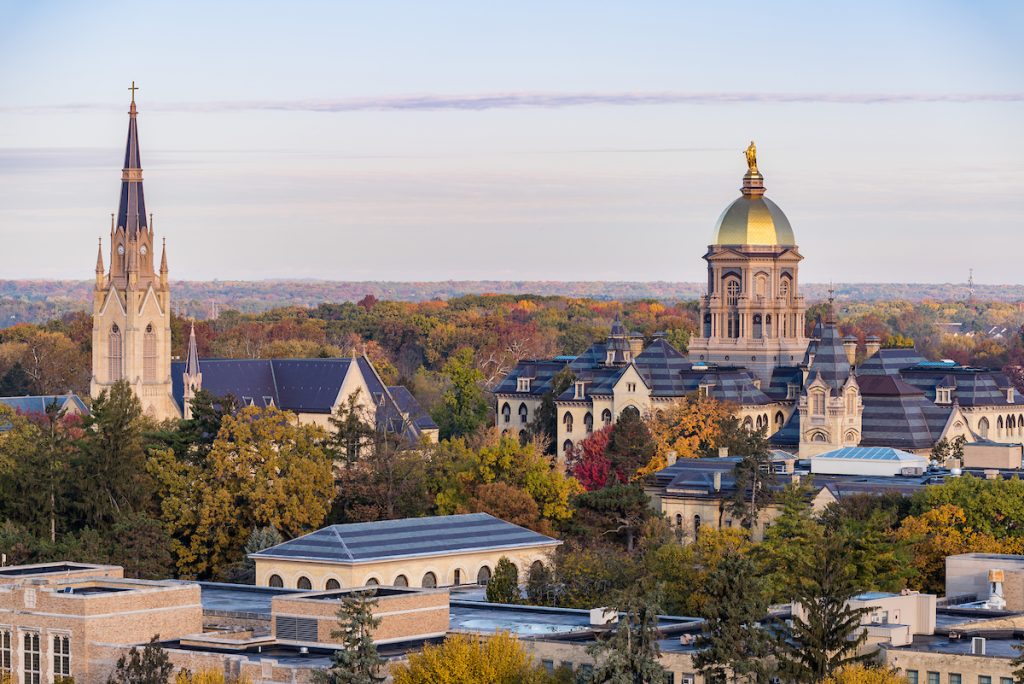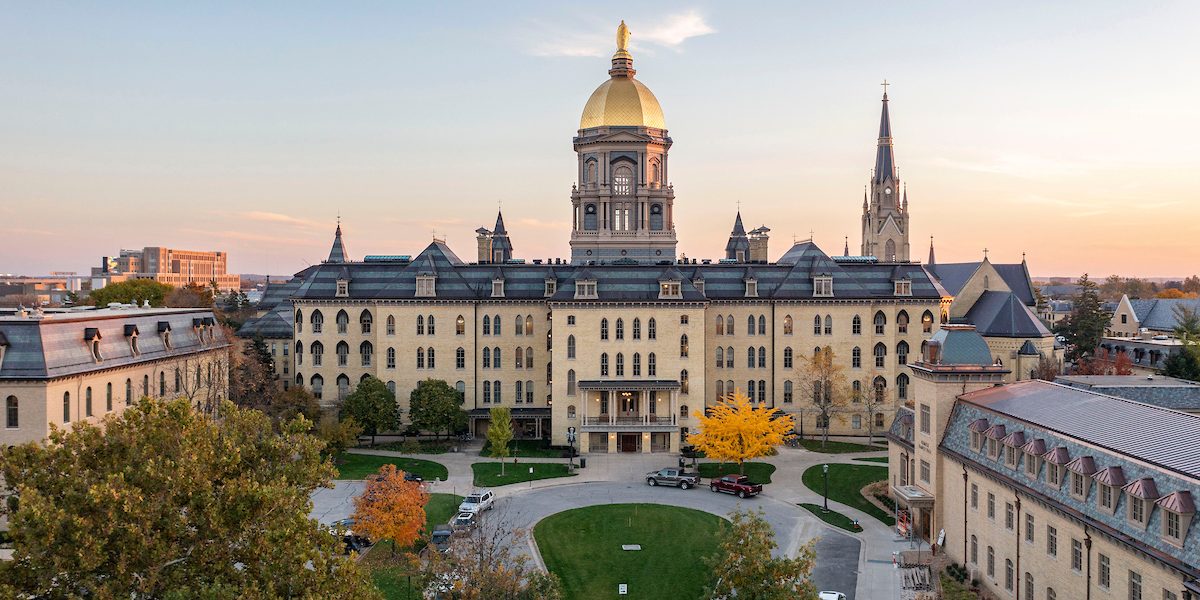The University of Notre Dame is a private research university inspired by its Catholic character to be a powerful means for doing good in the world.
Founded in 1842 by Rev. Edward F. Sorin, C.S.C., it has grown to be a leading American university that is one of the few universities to consistently rank in the top 25 in the U.S. News & World Report. With approximately 8,500 undergraduate and 2,000 graduate students, Notre Dame is a comprehensive modern university with an excellent reputation for its teaching, scholarship, and research.
The 1,250 acre campus includes a number of recognizable architectural landmarks, including the Golden Dome, the Word of Life mural (“Touchdown Jesus”), and the Notre Dame Stadium. It is regularly named as one of the most beautiful campuses in the world and provides beautiful quads, lakes, and woodlands for the enjoyment and exploration of all conference attendees.
Notre Dame is located adjacent to South Bend, Indiana, which is a metropolitan area with a population of nearly 325,000.
Investment in Science and Research Communications
Notre Dame has a long history of research and scholarship. The aerodynamics of glider flight, the transmission of wireless messages, and the formulae for synthetic rubber were pioneered at the University. Today its researchers are achieving breakthroughs in astrophysics, radiation chemistry, environmental sciences, rare and neglected diseases, aviation propulsion, peace studies, cancer, robotics, nanoelectronics, and much more.
In recent years, Notre Dame has also invested in being a leader in science and research communications. Home to two award-winning teams of science and research communications experts, the University uses its independent, academic leadership position to inform the public about timely, cutting-edge research, scholarship, and creative endeavors.
